The Carthaginians, like their Phoenician forefathers, were highly successful traders who sailed the Mediterranean with their goods, and such was their success that Carthage became the richest city in the ancient world. Metals, foodstuffs, slaves, and high-quality manufactured goods such as fine cloths and gold jewellery were bought and sold to anyone who could afford them. The Carthaginians became renowned for their mercantile skills and ability to sell anything to anyone, but always at a price.
The Empire & Trading Partners
From its founding in the late 9th century BCE by settlers from the Phoenician city of Tyre, Carthage almost immediately began to prosper thanks to its strategic location on the trade routes between the western Mediterranean and the Levant. Within a century the city would go on to found colonies of its own, and by the 6th century BCE it had taken over the mantle from Phoenicia as the region's greatest trading power. Carthage's commercial empire included North Africa, the Iberian Peninsula, Sicily, Sardinia, Corsica, Cyprus, Malta, and many other islands of the Mediterranean. Still not satisfied, expeditions were organised to find new and even more far-flung trade opportunities such as Himilco's voyage to Britain c. 450 BCE and Hanno's down the Atlantic coast of Africa c. 425 BCE.
The new territories would be a source of vast wealth, principally from natural resources such as gold and silver extracted from conquered regions. Just as the Europeans would exploit the natives of the ancient Americas in the 16th century CE, so too, the Carthaginians reaped rich rewards by transferring cheaply acquired metals to regions where they had a vastly higher value. In addition, these new territories, which later necessitated the foundation of colonies to protect trade interests and market monopolies, would eventually provide new markets to which the Carthaginians could export their own manufactured goods and those they acquired via trade from other cultures. Nor were the Carthaginians limited to sea routes as they are also known to have exploited the caravan routes of the Sahara.
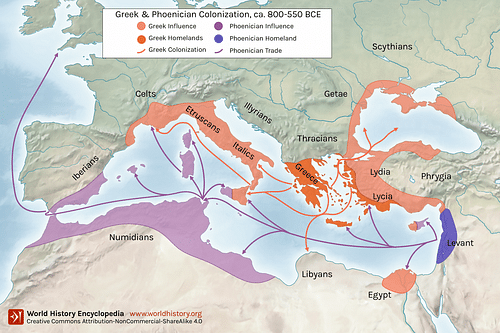
Herodotus, writing in the 5th century BCE, describes the method the Carthaginians used to barter with indigenous peoples in new territories along the North African coast, beyond the Pillars of Hercules:
The Carthaginians unload their wares and arrange them on the beach; then they re-board their boats and light a smoky fire. When the native inhabitants see the smoke, they come to the shore and, after setting out gold in exchange for the goods, they withdraw. The Carthaginians disembark and examine what the natives have left there, and if the gold appears to them a worthy price for their wares, they take it with them and depart; if not, they get back on their boats and sit down to wait while the natives approach again and set out more gold, until they satisfy the Carthaginians that the amount is sufficient. Neither side tries to wrong the other, for the Carthaginians do not touch the gold until it equals the value of their goods, nor do the natives touch the goods until the Carthaginians have taken away the gold. (Book IV, 196)
Carthaginian merchants, of course, also traded with contemporary powers in Greece, Egypt, Phoenicia, and the Hellenistic Kingdoms. Carthage signed treaties with other states to agree on areas of exclusive operation, notably with the Etruscans and with Rome c. 509 BCE and 348 BCE. Carthaginian traders were a common sight at the great markets of Athens, Delos, and Syracuse, sometimes having permanent quarters in the great cities of the day such as the Vicus Africus area of Rome. Punic amphorae have been discovered as far afield as Massilia (Marseille), Corsica, and Rome.
Carthage also welcomed foreign traders in return who came from Rhodes, Athens, and Italy. They were treated equally with the city's own merchants, their goods were bought, stored, and re-exported by Carthaginian traders. Trade was further facilitated by the minting of coinage from the 5th century BCE and conversions were made easier when the Ptolemies of Egypt adopted the same Phoenician standard for their own coins. Carthaginian coins were made from gold, silver, electrum, and bronze.
The reputation of Carthaginian traders was well-known, if not particularly flattering, in the Greek world as attested by a star character in a lost Greek comedy play, re-worked by the Roman playwright Plautus in his Poenulus (The Punic Chappie). He describes one Hanno, a merchant, who has amongst his wares pipes, shoe-straps, and panthers, a comic cargo designed to show that the Carthaginians would trade in anything they could get their hands on as long as it turned a profit.
Sea Traders
Just how much trade was carried out by the state and which proportion by private merchants is unknown, but there is certainly evidence of both. It is likely that the bulk of trade was carried out by aristocratic merchants who also controlled the political and religious offices of Carthage. One important form of state intervention in the area of trade was the powerful Carthaginian naval fleet. This navy allowed Carthage to maintain its stranglehold on such key waystations along ancient shipping routes as Sicily and Gades (Cadiz) in southern Spain. It also ruthlessly dealt with the trading ships of competing powers. Any foreign ship discovered in waters considered by Carthage to be in its jurisdiction was sunk. Pirates were similarly dealt with.
Carthaginian trading ships were much like those long-used by Phoenician cities. Most common was the large hippos with a rounded bottom. The name (horse) derived from the horsehead which commonly appeared on the prow. A second type was the gaulos ('ship' in Phoenician) which was smaller and with an even wider hull.
Carthaginian ships and those of foreign merchants had at their disposal a large rectangular merchant harbour which connected to the city's circular naval harbour. Both ports were manmade, about two metres deep, and they possibly date to 220-210 BCE. This harbour replaced, or perhaps extended, the original simple key where merchant vessels had tied up in a row. The new merchant harbour measured 300 x 150 metres and was entered by a 250-metre arced channel. Iron chains could be raised to block this entrance if necessary.
Traded Goods
Raw materials, especially precious metals (gold, silver, tin, copper, lead, and iron), animal skins, wool, amber, ivory, and incense were imported and exported. Slaves were another valuable commodity that came and went through Carthage's port. Precious art objects made from gold, silver, and ivory were exported from Carthage's workshops. There were fine, embroidered textiles, including the fine carpets and cushions the Carthaginians were famous for, and the much sought-after purple-dyed cloth made using extract from the murex shellfish. Manufactured goods included weapons, food-related utensils, scissors, tools, bronze strigils (for cleaning the body after exercise), amulets, jewellery, decorative glassware, wooden furniture, ceramic figurines, decorated ostrich eggs, incense burners, and ornamental masks.

Foodstuffs traded included olives, olive oil, wine, cereals, salted fish, garlic, pomegranates, nuts, herbs, and spices. Two Punic shipwrecks, one discovered off Ibiza (5th century BCE) and the other off Marsala on Sicily (3rd century BCE), both had cargoes of fish sauce, the garum which the Romans would become addicted to. The Marsala wreck also carried amphorae of wine and olives. Low-quality pottery vessels and lamps, affordable to the less rich tribes in such parts of the empire as Iberia, were first imported to Carthage from Corinth via Syracuse and central and southern Italy and then shipped for barter with local tribes.
Conclusion
Naturally, the Carthaginians did not have everything their own way and they faced competition for access to resource-rich territories and control of lucrative trade routes. This led to warfare in Sicily, especially against the tyrants of Syracuse, and with Rome, who turned out to be an enemy they could not match. After centuries of dominating the western Mediterranean the hugely expensive and debilitating Punic Wars would end in 146 BCE with Rome's destruction of Carthage. The city would rise again a century later and become an important trading and cultural centre within the Roman Empire, perhaps even amongst the top five cities therein, but it never quite reached the heights it had once achieved when Carthaginian ships had ruled the seas.
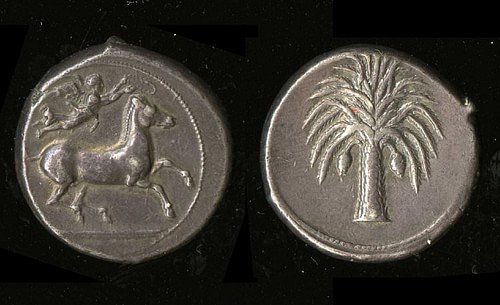
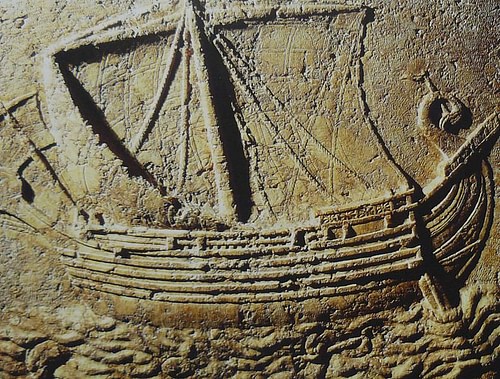
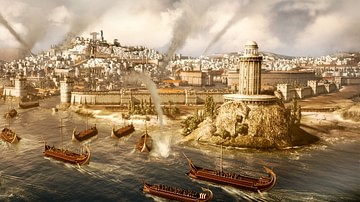

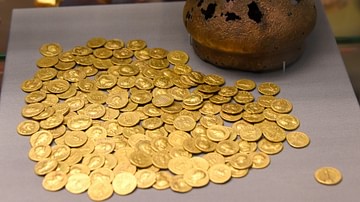
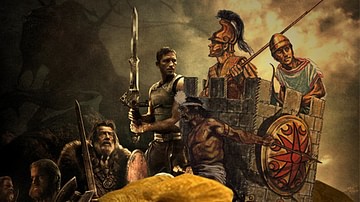
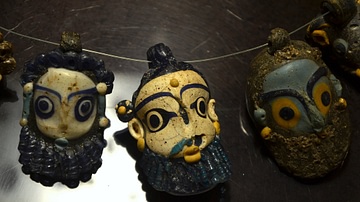
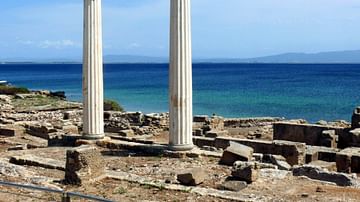

![Historical Researches Into the Politics, Intercourse, and Trade of the Carthaginians, Ethiopians, and Egyptians, Tr. [By D.a. Talboys from Vol.2 of ... Der Vornehmsten Völker Der Alten Welt].](https://m.media-amazon.com/images/I/51u21IulA8L._SL160_.jpg)


